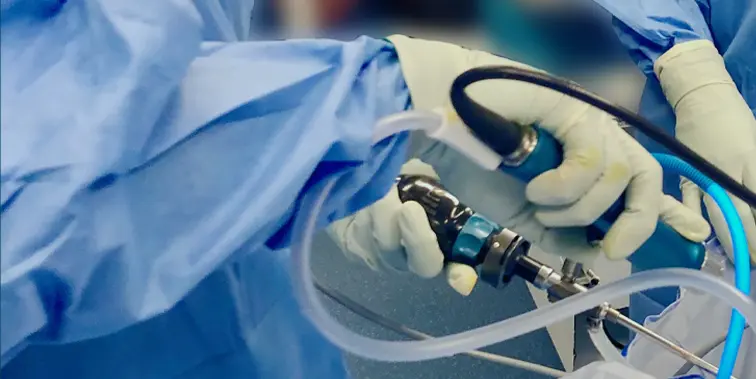Rotator Cuff Surgery
Mr. Soong Chua and his dedicated team specialise in rotator cuff surgery and in identifying rotator cuff tears, whether partial or complete. With expertise in shoulder surgery, Mr Soong Chua offers tailored solutions to help you regain your full range of motion.
Partial and Full Rotator Cuff Tears
The rotator cuff is a group of four muscles and their tendons that wrap around the shoulder joint, helping it move and stay stable. A rotator cuff tear is a common injury that can be partial or full-thickness, depending on the extent of tendon damage in the shoulder’s rotator cuff muscles.
- Partial Tear: Addressing tendon damage without complete tearing may involve a trimming or smoothing procedure.
- Full-thickness Tear: A complete tear may necessitate repair or reattachment to the upper arm bone (humerus).
Before considering surgery, alternative options like physiotherapy and injections are considered. If these approaches do not provide desired relief, or if your activities involve sports or overhead work, surgical intervention might be suggested.
View this video for an insight into the procedure.
Surgery
Secure Reattachment for Recovery
This involves using sturdy stitches or tapes to reattach the tendon to the bone. This attachment is fortified by specialised bone anchors that maintain tendon positioning throughout the healing process. The surgical procedure, performed under general anaesthesia, is complemented by a nerve block that temporarily numbs shoulder nerves, contributing to reduced discomfort.
Less Invasive Surgical Techniques
Recent years have witnessed significant advancements in rotator cuff repair treatments, offering less invasive options such as arthroscopic rotator cuff repair (keyhole surgery).
Mr. Soong Chua is an orthopaedic surgeon who specialises in arthroscopic surgery which is a minimally invasive keyhole approach that enables enhanced precision for most rotator cuff repairs. This technique can result in a more secure and successful repair compared to traditional open techniques.
Facilitating Healing with Rotator Cuff Patch/Graft Augmentation
In certain cases, a rotator cuff patch or augment may be introduced to facilitate healing. A rotator cuff patch or augment is a bioinductive patch that is used to enhance healing of a damaged or torn rotator cuff tendon by providing collagen which promotes the body’s natural healing mechanisms. This can reduce strain on the tendon which may improve healing in certain types of rotator cuff tears.

Steps of Arthroscopic Rotator Cuff Tear Repair
- Anaesthesia and Setup:
- You’ll receive anaesthesia, which may include a combination of general anaesthesia and a nerve block.
- The surgical team will position you and clean and prepare the surgical area.
- Small Incisions:
- Several small incisions, each about the size of a buttonhole, are made around the shoulder. These serve as portals for the arthroscope and surgical instruments.
- Arthroscope Insertion:
- An arthroscope, a thin tube with a camera and light, is inserted through one of the incisions. This allows Mr. Soong Chua to visualise the inside of the shoulder joint on a monitor.
- Assessment and Tendon Preparation:
- Mr. Soong Chua examines the torn rotator cuff tendon and surrounding structures using the arthroscope.
- Any damaged tissue is trimmed or removed, and the torn edges of the tendon are prepared for repair.
- Tendon Reattachment:
- Sutures, anchors, or other fixation devices are inserted through the other incisions.
- The torn tendon is reattached to the bone using these devices to secure it in place.
- Stabilisation and Reinforcement:
- Specialised anchors are used to provide stability to the reattached tendon. These anchors are inserted into the bone to anchor the tendon securely.
- Closure:
- Once the repair is complete, the surgical instruments are removed, and the incisions are typically closed with sutures or steri-strips.
- Recovery and Rehabilitation:
- After surgery, you’ll be monitored in a recovery area as the anaesthesia wears off.
- Physical therapy and rehabilitation will be a crucial part of your recovery to regain strength, mobility, and function in muscles and tendons of your shoulder.
It’s important to note that arthroscopic surgery is minimally invasive and generally involves smaller incisions compared to open surgery. The specific steps may vary based on the extent of the tear and your individual needs.
As always, Mr. Soong Chua will provide you with detailed information about the specific procedure planned for your case and what to expect during and after surgery.
For comprehensive and effective rotator cuff tear treatment, contact Mr. Soong Chua’s practice today to schedule a consultation.

